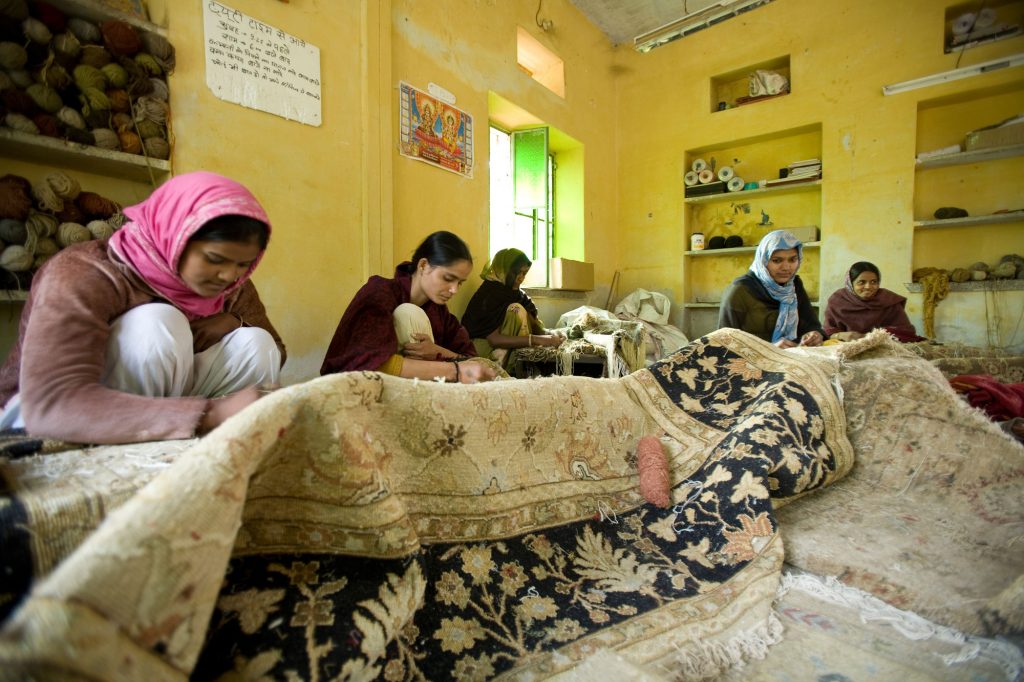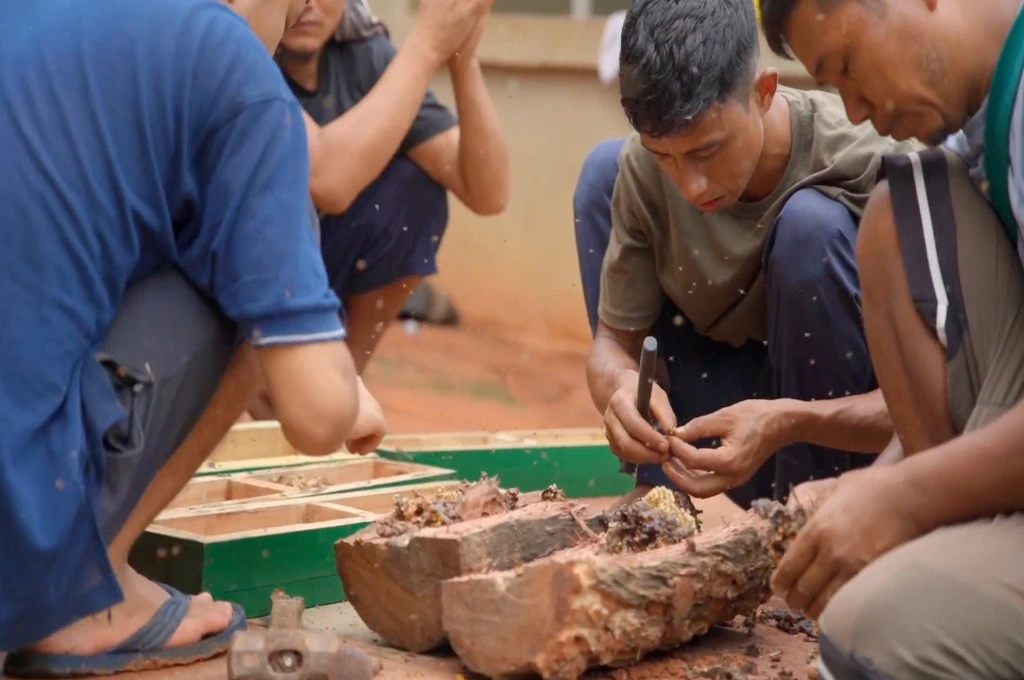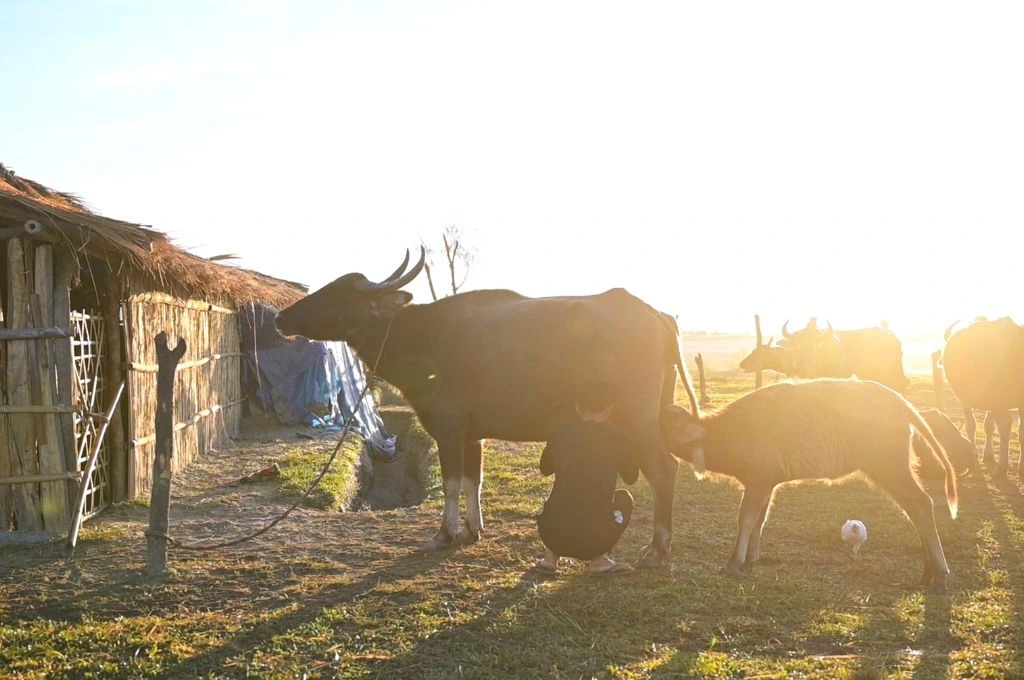Sustainable livelihoods is an approach to eradicating poverty that applies environmental, economic, and social equity principles to access and consumption of resources. A livelihood can be said to be sustainable if it can cope with and recover from stresses and shocks.
The 2017 SOIL report estimates that unemployment is rising steadily, and to meet the demand for jobs, 103 million new jobs, along with skilling for 127 million people is required by 2022. Till date, sustainable livelihood efforts have largely been centred around agriculture and allied sectors; to meet these numbers however, we will now need to shift emphasis to other avenues—skill development, entrepreneurship, and innovation.
The AVPN report, on which this article is based, maps the existing state of the sustainable livelihoods sector in India, and fills a crucial gap by providing an analytical demand-side perspective to the funding landscape.

A landscape overview
Though agriculture employs 64 percent of the total rural workforce, it produces only 39 percent of the total monetary rural output. Price realisation is poor, and farmers are unable to negotiate fair, self-sustaining prices—largely due to India’s antiquated agricultural market system, which is juxtaposed with high input costs (seeds, labour, equipment, transportation, and so on).
Sectors like services and construction are growing, but worker productivity is not increasing. This can be attributed to a lack of training, inadequate infrastructure, disorganised frameworks for employment engagement, and other factors.
Craftspeople and artisans are critical to a non-farm rural economy. However, the traditional handicrafts sector is informal and unorganised, and while there is market potential, artisans are unable to tap into new markets and take their businesses to scale.
Along with a lack of jobs for unskilled labour, the skilled labour ecosystem is constrained by inadequate training infrastructure, out-of-date curricula, and other limitations.
Increasingly, the Indian government recognises that successful entrepreneurs not only innovate and bring new products and concepts to the market, but also create jobs, build wealth, and improve market efficiency. The Report of the Expert Committee on Innovation and Entrepreneurship recommends focusing on young and innovative technology firms, upcoming manufacturing businesses, and innovator companies.

Related article: How do you solve a problem like livelihoods?
What the research says
Having interviewed sector experts and 44 organisations working on sustainable livelihoods, the following findings have emerged from the report:
1. Issues around impact
Programme-funding support–particularly for nonprofits–for short durations of one to two years is counter-productive. Not only do long-term partnerships allow for more impactful implementation, they also allow for systems for sustainability to be set in place. Myopic, short-term funding, on the other hand, leads to piecemeal development, with no mass impact.
Donors often want to see measurable, tangible outcomes—but how do you quantify soft skills or building agency?
Donors impose the pressure of achieving scalability and sustainability in impossibly short times, and often want to see measurable, tangible outcomes—but how do you quantify soft skills or building agency?
Managing investor expectations is a struggle, and it becomes a chicken-and-egg scenario of sorts, where enterprises require funds to scale and sustain businesses, but investors want to see sustainability and scalability in a model before they commit funds.
Corporates are accustomed to a pace that is not realistic for development interventions, and they tend to seek immediate impact. The short time commitments from corporate donors is a significant barrier to realising impact, and often, CSR partners only commit to supporting programmes for a year or two, even when they have been designed to run for several years.
According to interviewees, many corporates typically invest in areas around their offices and plants (the CSR regulations mandate preference to local areas and neighbourhoods), and as a result, many organisations describe having to exclude rural populations from their interventions, as their CSR partners operated in urban and semi-urban areas.
Building businesses takes time, and when providing a product or service, there is an entire value chain that needs to be set up in order to accomplish production. Often, these value chains tend to be non-existent, and need to be created from scratch.
Value chains often need to be created from scratch.
Access to markets is not easy either, and though market linkage is a major funding gap in the livelihoods sector, often the donor perception of the term ‘marketing’ is not aligned with that of the social organisations. Ensuring demand is an intensive process, with various steps involved—market research and study, demand prediction, and subsequent training, to ensure market changes are successfully handled.
Another important aspect to supporting market linkages is building awareness—both amongst potential customers, as well as policy influencers and decision makers—to inform people of the challenges of sustainable livelihoods, and encourage support to local entrepreneurs, businesses, and farmers.
2. Ecosystem Development
Developing the sustainable livelihoods sector requires its own stream of funding support, separate from project implementation or product and service development.
Partnership formation could be a solution for the lack of support for ecosystem development. Such partnerships could be between implementing organisations and government or private sector, or between all three, or simply between implementors themselves.
However, collaboration between implementing organisations is rare, as most organisations vie to access the same limited set of funds, and view each other as competitors not collaborators.
Partnering with the government brings the advantage of access to scale, along with access to existing infrastructure already in place to launch further activities.
3. Rise of innovation and entrepreneurship
Due to the instability of grants, organisations are now starting to develop hybrid models —funded partly by donors, and partly by revenue. Along with this, several organisations are now consciously structuring themselves as for-profit, private limited entities, or choosing to house various entities (private limited businesses, cooperatives, nonprofits) under one umbrella in order to access the different forms of funding available to them. Organisations are also shifting to revenue-generating models so that eventually, ownership can be transferred to target communities themselves.
Though the need to invest in entrepreneurship has been heavily emphasised, funders are apprehensive about funding ‘risky’ models, and prefer to channel funds into large organisations that can take projects to scale. This risk-averse attitude results in organisations having to self-finance new projects or pilots.
Changes in government policy around start-ups and entrepreneurship are evolving to be supportive of innovation and MSMEs. Consequently, implementing organisations are hopeful that donor outlooks will align to this as well.
The emphasis on self-sufficiency within the market-based approach highlights the need to build entrepreneurship in India –building job creators would mean creating more jobs.
The need to focus on women within entrepreneurship is high. Women in rural areas have no access to resources, and little support from their communities. Entrepreneurship could give them the additional income that could benefit their health, their families’ well-being, and elevate their status in society.
Microfinance has empowered women to some extent, but without stable sources of income, they remain stuck in debt repayment cycles. Enabling women to generate income through entrepreneurship is an effective way of generating sustainable livelihoods at scale, but support for this sort of micro-entrepreneurship is lacking.

Photo courtesy: Charlotte Anderson
According to interviewees, most donors prefer skilling over entrepreneurship development, due to the ease of measuring indicators such as job placements, salaries, and retention rates.
Most donors prefer skilling over entrepreneurship development, due to the ease of measuring indicators.
Skill development leads to skill-based migration into semi-urban and urban areas, which increasingly leads to overcrowding—and hence, is unsustainable. Most skilling programmes are currently designed to engage only those that have done poorly in school or are drop-outs, and the skills they provide are not aspirational ones. As a result, the incentive to continue working is low, and people are demotivated.
Vocational training is often stereotyped, and trains people for jobs that have limited scope for growth—raising questions about its sustainability. When it comes to workers who come from disadvantaged backgrounds, ideas such as workplace behaviour, initial hand-holding, and job preparedness are missing from the employers’ lexicon.
4. Institutional capacity building
Donors are more inclined to providing funding for project components related to execution, and don’t often cover administrative costs, or costs related to organisational growth—whether basic utilities, team building exercises, or improving technology and accounting systems.
Reliable access to human resources with the skills and capacity to implement both technical and non-technical activities is essential to any sector. But when it comes to sustainable livelihoods, grants for employment training, skill building, and increasing the technical capacity of staff is significantly lacking.
On one hand, potential hires straight out of postgraduation courses lack technical knowledge, and with no investment in expanding knowledge bases, they are ill-equipped to work in the sustainable livelihoods space. On the other end of the expertise spectrum, hiring senior level staff is cost-prohibitive.
Inhibitive red-tapism, long administrative processes, and lack of proper governance result in long delays in receiving funds from the government. This, paired with the pressure put on recipients to inflate impact-related data, makes government funding a difficult process to negotiate.
Feedback and communication from donors can add value to programmes, and donors who take the time to understand on-ground realities and provide organisations with support even post-funding can contribute towards refining results and outcomes. Open, transparent communications are appreciated by nonprofits, and this allows useful advice and solutions to emerge, along with assessing programme successes and failures constructively.
—
Given the dynamic and constantly evolving nature of the sustainable livelihoods sector, this demand-side view of the funding landscape provides insight into prevalent funding patterns and can help donors better understand what implementing organisations really need. Key takeaways from this analysis are: fund entrepreneurship and innovation, cultivate partnerships and open communication, support market linkages, invest in non-programme costs, and expand geographic outreach.
To read the full AVPN report — Sustainable Livelihoods in India — click here.





